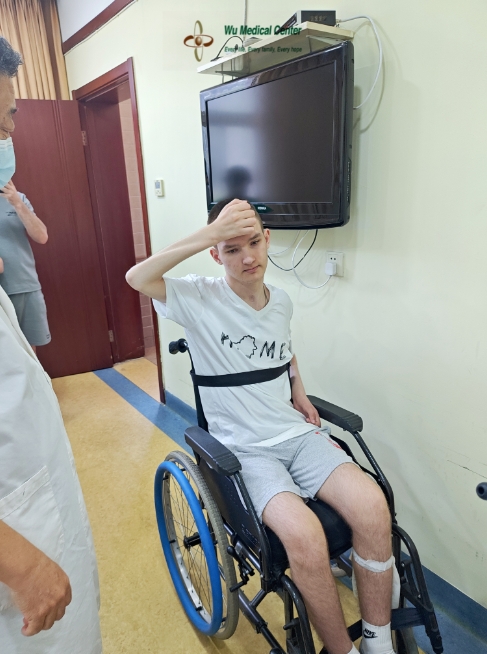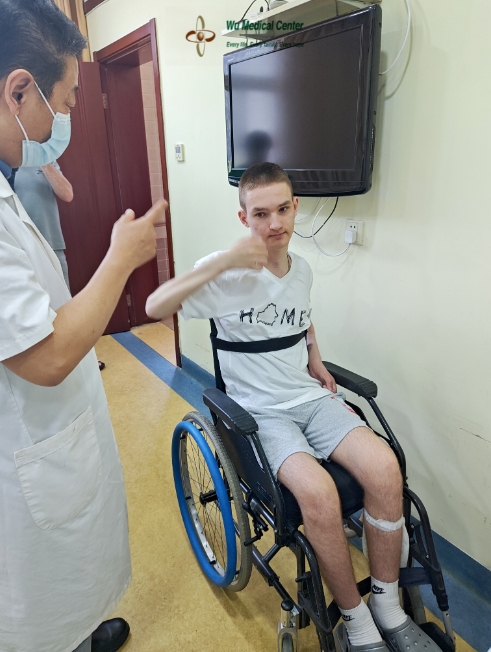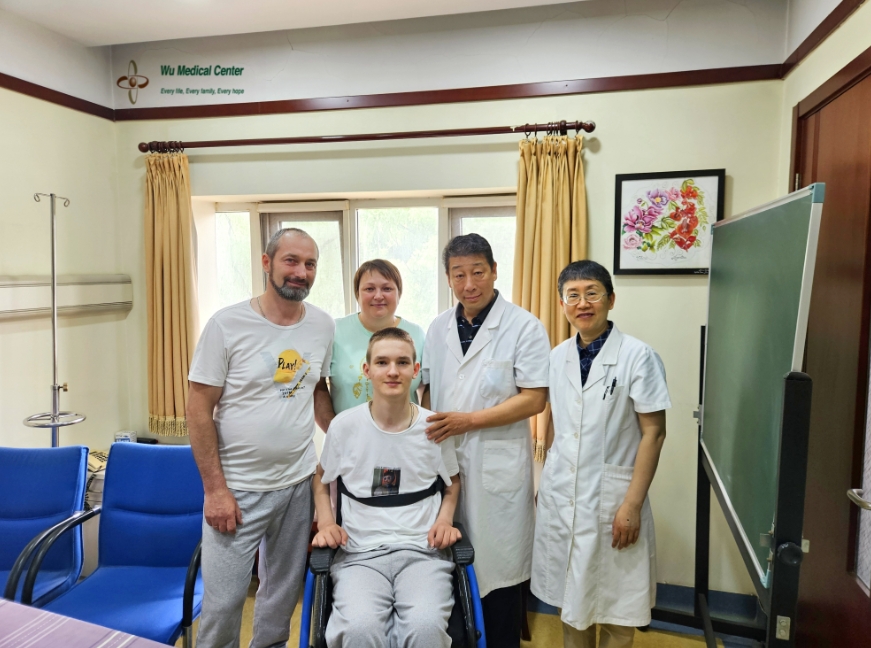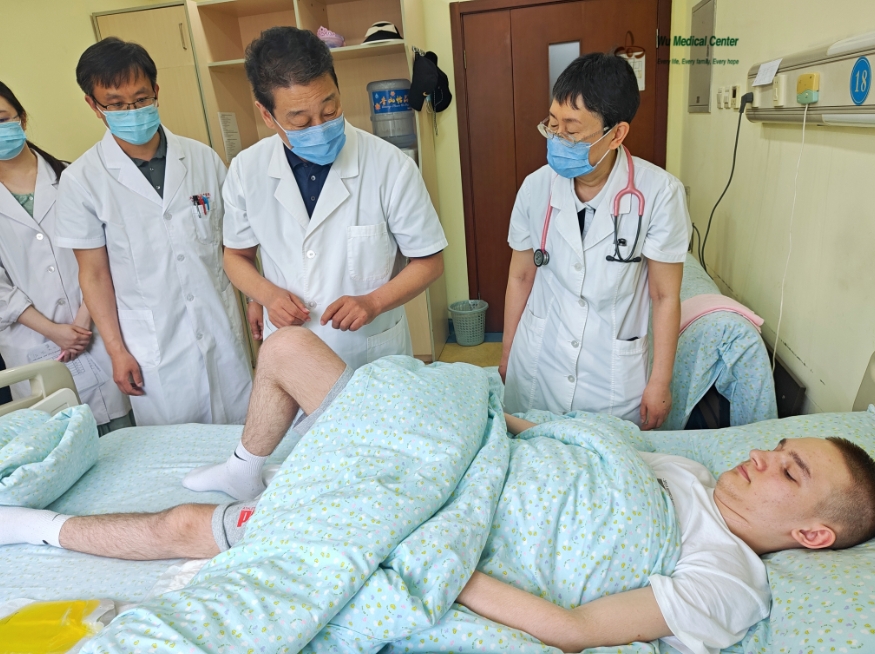Parfeyevets Aliaksei-Sequelae of spinal cord injury-(Belarus)
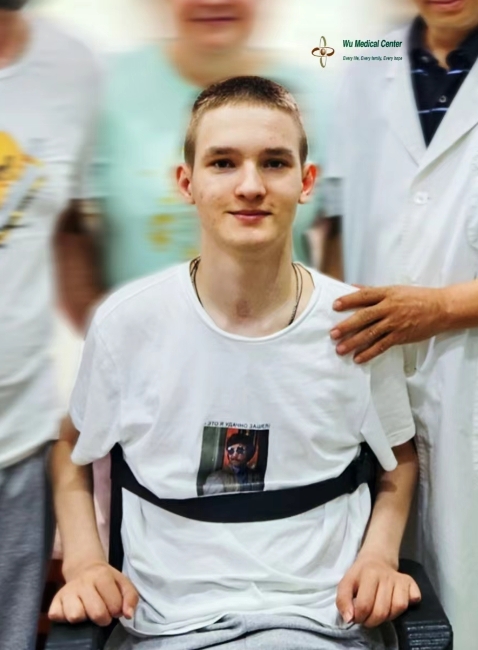 Patient's name: Parfeyevets Aliaksei
Patient's name: Parfeyevets Aliaksei
Gender: Male
Age: 16 years old
Nationality: Belarus
Diagnosis: Sequelae of spinal cord injury
Prior to treatment:
The patient, presenting with “lack of voluntary muscle movements and sensory disturbances of four extremities caused by a previous injury and sequelae of spinal cord injury for over 2 years”, was admitted with the diagnosis of “sequelae of spinal cord injury”. He had no history of chronic diseases or infectious diseases, and no history of drug or food allergies.
Physical Examination at Admission:
Patient's blood pressure was 150/89mmHg, his heart rate was 60 beats per minute, and his respiratory rate was 20 times per minute. He was of normal development and had nutritional deficiency. His lungs had clear breath sounds with no rales. His heart sounds were strong and regular, and there were no murmurs at any valve areas. His abdomen was flat and soft, with no hepatomegaly or splenomegaly. There was no edema in his lower limbs.
Neurological Examination:
Patient was clear of mind, speaks fluently, and his memory, calculation, and orientation were normal. There were no abnormalities in his cranial nerves. His neck was soft, with a range of motion and shrug strength of about grade 4. His proximal upper limb muscle strength was grade 1+. His wrist muscle strength was grade 1, and his fingers were unable to move. His grip strength was grade 0. His lower limb muscle strength was 0 grade. His upper limbs have slightly decreased muscle tone, while his lower limbs have basically normal muscle tone. He had suffered from muscle atrophy throughout his body. His weight had decreased by more than 20 kilograms since the onset of illness. His left upper limb tendon reflexes had decreased, while his right upper limb tendon reflexes were slightly increased; his both side abdominal wall reflexes were absent; his lower limb tendon reflexes were elevated with intermittent clonus. Sensory function of his bilateral T1 segment below was lost, including both superficial and deep sensation. His both Babinski's sign was positive. There was no evidence of meningeal irritation.
Treatment process:
The patient was admitted with a clear diagnosis of "sequelae of spinal cord injury." Neural stem cells and mesenchymal stem cells were administered for his spinal nerve repair therapy, while CAST therapy was used to improve circulation, nourish nerves, regulate immunity, and provide comprehensive rehabilitation treatment.
After treatment:
The patient's motor function has significantly improved compared to when he was admitted to the hospital. His range of motion and flexibility of his arms have improved. His biceps muscle strength is grade 3, and he can raise his arms in a sitting position for more than 3 seconds. He can also change the motion of his upper arms from forward and outward to horizontal movements to the left and right. His forearm muscle strength, wrist muscle strength, and grip strength are grade 2, and he can complete actions such as holding a cup and drinking from it. His fingers exhibit some bending and extension movement. His abdominal and lower back muscle strength has improved by about 2 levels, with minimal assistance for turning over. His limb tremors and associated movements have decreased. The level of his sensory impairment has decreased from T1 level at admission to T4 level. His blood pressure has improved and is maintained at 100-120/60-70 mmHg. His nutritional status has improved with an increase in weight, and his energy, physical stamina, and exercise tolerance have significantly improved.
